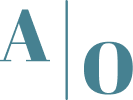In the new world of PEG (Profitable Efficient Growth) operators must ensure investment in product development is tuned to Optimize SaaS R&D Spend and maximize the contribution to the company’s strategic objectives.
Investing in R&D is critical for fueling innovation and accelerating growth at SaaS companies. However, determining just the right level of R&D spending and effectively measuring its business impact can be challenging. This guide provides helpful strategic insights to optimize your R&D budget allocation and maximize returns.
Setting the Right R&D Budget
First, let’s take a look at some useful industry benchmarks as a starting point. Historically, private high-growth SaaS companies have allocated around 24% of their annual recurring revenue (ARR) towards R&D spending. Public companies invest 19-30% depending on their expansion pace – the faster they’re growing revenue, the more they tend to invest back into R&D.
However, an interesting recent report from The First Round Review analyzed over 300 private SaaS firms and found that the top revenue generators were spending much less on R&D – averaging just 8-12%. Yet, they still maintained impressive growth rates of over 40%. So it seems prioritizing efficiency and returns matters more than just sheer R&D spend levels.
Evidence also suggests going overboard on R&D spend can become inefficient, with diminishing returns if you allocate beyond 30% of revenue (McKinsey analysis). When setting budgets, it’s wise to consider factors like your specific company stage, target customer segments, competitive landscape, etc. For example, verticalized SaaS solutions for SMBs may need lower relative R&D than more horizontal enterprise offerings (per Insight Partners).

Evaluating Return on Investment
Of course, we all want to assess our R&D investments against actual business outcomes and impact. Simple ROI formulas like the ratio of revenue produced per engineering headcount or incremental revenue vs. project costs can provide some basic productivity gauges.
But to truly capture the full value of R&D spend, it helps to employ multidimensional analysis models that encompass both quantitative outputs as well as important qualitative impacts. Two insightful approaches include:
- Total Gross Contribution & Maturity Analysis – Calculates profit generated over time while accounting for how far along projects are vs. key technical and commercial milestones (McKinsey).
- Strategic Roadmap Budgeting – Compares spending to competitors, maps investments to priority product roadmaps, and tightly manages key developer productivity metrics (Andreessen Horowitz).
The reality is that simplistic ROI calculations alone miss critical factors like technological advancements, process improvements, customer loyalty impacts, and inherently uncertain exploratory outcomes. Using a few different analytical lenses provides a much fuller perspective.
Public companies invest 19-30% depending on their expansion pace – the faster they’re growing revenue, the more they tend to invest back into R&D.
Allocating Resources Strategically
Deciding on an overall annual R&D budget is really just the first challenge. The next key piece is determining the optimal distribution of those resources across various product initiatives, features, and priorities. As roadmaps inevitably evolve and shift over time, it’s easy to lose that critical strategic alignment if you’re not thoughtful and consistent in your planning approach.
Widely used allocation frameworks like the 70-20-10 guideline suggest splitting R&D investment across:
- 70% – Core product maintenance, enhancements, and sustaining engineering
- 20% – New products/features directly intended to drive revenue growth
- 10% – More speculative, longer-term innovative bets
However, predetermined rigid allocations often fail to respond enough to emerging market shifts and signals. Adopting more flexible allocation frameworks enables dynamically redirecting resources based on continuously validated priorities. Maintaining a pool of unallocated “innovation funds” also helps preserve agility to pivot to new opportunities as they materialize (per Insight Partners guidance).
Balancing Customer Acquisition & Expansion
Another lens to look at resource allocation is by key revenue growth drivers – acquiring net new customer accounts vs. systematic expansion of existing relationships. The prioritization across these two levers depends heavily on your underlying unit economics around customer lifetime value (LTV) and cost of acquisition (CAC).
The average CAC for mid-market SaaS solutions has risen over 40% since 2019, now reaching nearly $400 per new customer, according to CMO Council data published by Paddle. With acquisition costs climbing, product differentiation and strategic expansion into fresh TAMs become vital to offset that increasing spending pressure. This implies allocating more of the R&D budget to innovative new capabilities that can open up lucrative new market opportunities and accelerate payback periods.

Prioritizing customer retention and expansion initiatives positively impacts overall spend efficiency – it costs roughly one-sixth as much to grow an existing account as to acquire a completely new customer (per Accel analysis). But overly focusing just on retention ultimately slows overall growth velocity, so maintaining an appropriate balance is key.
There’s also been a broader philosophical shift in the SaaS world around the importance of upsell, cross-sell, and systematic expansion motions. As OpenView articulates, the fastest growing SaaS companies “generate most of their growth not from new logos, but from expansion and land-and-expand within their existing customer base.”
The emergence of ambitious 120-130%+ net revenue retention (NRR) benchmarks further underscores the strategic imperative of robust customer growth and retention efforts. But over-rotating solely on expansion risks unduly slowing new logo acquisition velocity if you’re not still balancing continued product innovation to attract a steady flow of fresh customer relationships.

Other Strategic Optimization Moves
Beyond smart budgeting and allocation frameworks, successful SaaS leaders also focus on a few other strategic levers to enhance the productivity and impact of their R&D investments:
Actively Monitor R&D Output Metrics:
Tracking key performance indicators focused on development velocity, quality, and deployment speed is crucial. This includes metrics like:
- Velocity: Story points completed per sprint to gauge output
- Lead Time & Cycle Time: Time from ideation to production and actual work time per feature
- Defect Rates: Escaped defects, defect removal efficiency to assess quality
- Deployment Frequency: How often software releases are shipped to production
Closely monitoring trends in these DevOps metrics, as outlined in resources like Atlassian’s Engineering Analytics guide, provides visibility into team productivity. This allows management to identify bottlenecks, make data-driven process improvements, and optimize the return on R&D investments by course-correcting when needed.
Leverage Usage Analytics
Platforms like Amplitude, Mixpanel, and Pendo allow detailed tracking of how customers actually engage with and derive value from products. Going beyond basic metrics like DAU/MAU, these tools can identify top features driving retention, reveal underutilized capabilities, and surface patterns around user behavior.
Aligning R&D priorities to insights surfaced in these usage analytics ensures investments are aligned with validated, data-driven hypotheses about customer needs and behaviors. This avoids misallocations to efforts that may not resonate with the market or target segments. Accel’s Metrics That Matter playbook provides deeper guidance on leveraging these tools.
Preserve Agility to Pivot
Given rapidly evolving markets, customer demands, and continuous learnings, SaaS companies must remain nimble in adjusting priorities and budgets. Replacing rigid annual R&D planning with quarterly funding cycles enables redirection of resources much faster when faced with shifting signals.
Reserving a pool of unallocated “innovation” funds, as recommended in Bessemer’s analysis, preserves flexibility to allocate new projects or realign existing workstreams in response to new insights, changing KPIs, or identified risks. Making regular, incremental funding decisions based on the most recent feedback loops enhances agility.
Takeaways
In summary, optimizing R&D for sustainable SaaS growth means setting dynamic budgets linked to output indicators, implementing multidimensional models to analyze productivity, maintaining adaptable allocation frameworks, and basing decisions on real usage data and validated market signals. Doing so increases your overall R&D efficiency and impact.
Summary of actionable insights:
- Set suitable overall budget levels based on benchmarks tailored to your specific growth stage, customer segments, and competitive landscape
- Employ analysis models encompassing both quantitative outputs as well as key qualitative impacts
- Structure adaptable frameworks to dynamically reallocate spending based on continuously validated market priorities
- Balance investments across both new customer acquisition efforts as well as strategic expansion of existing relationships
- Avoid solely over-rotating on existing account expansion at the expense of continued new customer acquisition velocity
- Closely monitor key output metrics like velocity, quality, deployment frequency to course-correct as needed
- Leverage holistic product usage analytics to validate investments align with real-world user behaviors and needs
References and additional reading are linked below. Let me know if you need any other guidance on optimizing your R&D investments to really drive your SaaS growth engine!
References
- Bessemer Venture Partners, “State of the Cloud Report”, 2022
- Blissfully, “2023 SaaS Trends Report”, 2023
- McKinsey Quarterly, “Brightening the Black Box of R&D”, 2015
- Andreessen Horowitz, “How to Think About R&D Spend”, 2023
- Insight Partners, “8 Tech Investors Share Predictions about 2023”, 2023
- Accel, “Control Your Growth, Control Your Future”, 2023
- Paddle, “How is CAC Changing over Time” 2023
- Atlassian Software, “Engineering Analytics”, 2023
- The First Round Review, “Does Lower R&D Spending Lead to Higher SaaS Profitability?”, 2022
- Tribe Capital, “The R&D Pendulum Has Swung Too Far”, 2021
- CMO Council, Cost Per Acquisition Benchmark Reports, 2022/2023
- OpenView, “The Importance of Net Revenue Retention”, 2021
- ChartMogul, “2023 SaaS Benchmarks Report”


